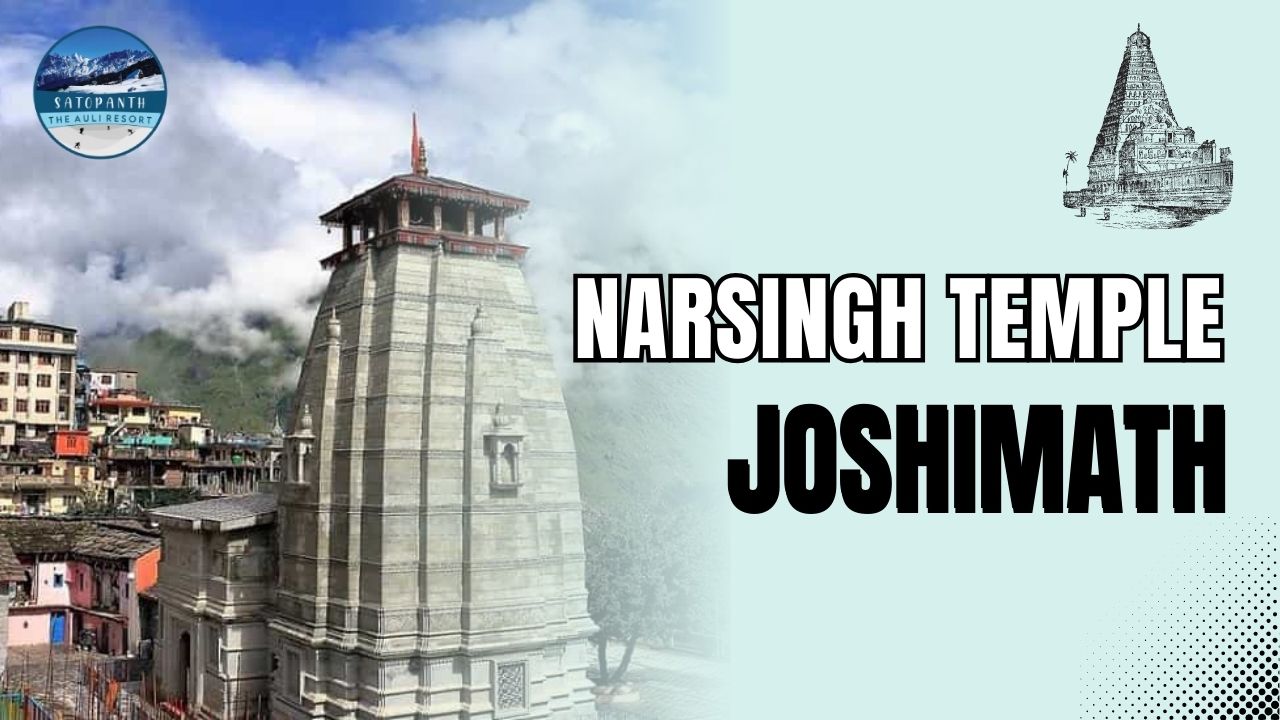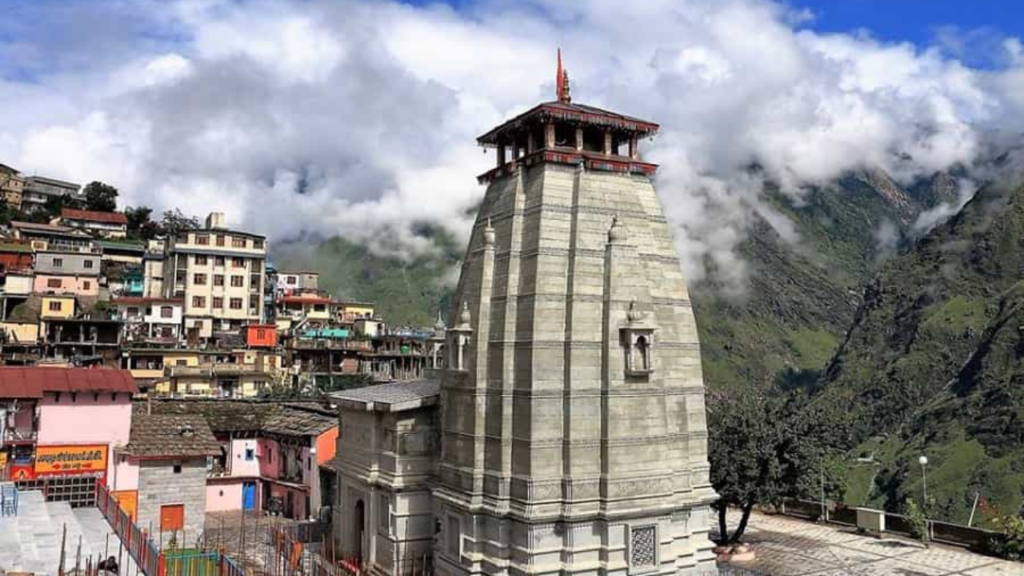

While many visits Narshingh Temple for spiritual solace, few realize the rich history, mythological significance, and architectural beauty that this temple holds. So, if you’re ever in Joshimath, don’t miss out on visiting Narsingh Temple, one of the most important religious sites in Uttarakhand. Here’s everything you need to know, from its history to how to plan your visit.
The Narsingh Temple Joshimath has roots deep in Hindu mythology. It’s believed that the temple is dedicated to Lord Narsingh, an avatar of Lord Vishnu. Legend has it that Lord Narsingh took this form to protect his devotee Prahlada from his tyrant father, Hiranyakashipu. This particular story has a special place in Indian mythology, as it symbolizes the eternal fight between good and evil.
Historically, this temple is believed to have been established during the reign of Adi Shankaracharya. Adi Shankaracharya, a revered philosopher and theologian, was instrumental in the revival of Hinduism during the 8th century. Narsingh Temple is part of the larger religious circuit that includes Badrinath, one of the most revered pilgrimage destinations for Hindus.
It is believed that the eventual breaking of the right arm of the deity at Narsingh Temple, signaling the permanent closure of the Badrinath temple. When this event occurs, the deity of Badrinath will be relocated to Bhavishya Badri, another temple in the same region. This legend adds an intriguing layer of mystique to Narsingh Temple Joshimath, drawing pilgrims and visitors from across India who are captivated by its connection to this future event.
Narsingh Temple holds great significance for followers of Vaishnavism, especially those undertaking the Char Dham Yatra. As per tradition, Badrinath temple remains closed during the winter months, and it’s at this time that the idol of Badrinath is brought to Narsingh Temple for worship. This further elevates the religious importance of the temple in the eyes of devotees.
Every day, multiple rituals are performed here, from the early morning “aarti” to evening prayers. Devotees come from far and wide to seek blessings, offer prayers, and witness the spiritual atmosphere of the temple. The temple has a tranquil, welcoming vibe, allowing visitors to not only partake in rituals but also meditate or reflect on the surrounding beauty.
For those interested, some of the key rituals include offering “Prasad” to Lord Narsingh and performing the ceremonial “abhishek” to the deity. These practices are simple yet deeply symbolic, representing the power and protection of Lord Vishnu.

Let’s talk about the temple’s architecture—it’s not just any regular structure. The Narsingh Temple Joshimath is an architectural beauty that stands out for its classic Himalayan style. Unlike the grand, elaborate temples of the plains, this one is modest yet incredibly striking.
Walking around the temple, you can almost feel the stories these stones have witnessed—an aura of quiet reverence surrounds the place. And don’t be surprised if you find yourself lingering a little longer just to soak it all in.
Getting to Narsingh Temple Joshimath is pretty straightforward, but it’s always nice to have a guide, right? If you’re traveling by air, the nearest airport is in Dehradun, specifically the Jolly Grant Airport. From there, it’s about a 280-kilometer journey to Joshimath. You can also opt for a train; the nearest railway station is in Rishikesh. From Rishikesh, buses and taxis are available, and the road journey to Joshimath takes around 8-9 hours.
For road-trippers, Joshimath is well connected by national highways. Whether you’re traveling by your own vehicle or booking a cab, you’ll be greeted by winding mountain roads and breathtaking scenery. And don’t worry—Joshimath itself is well connected by local transportation, so once you’re there, reaching the Narsingh Temple is a breeze.
When it comes to the best time to visit Narsingh Temple Joshimath, it’s all about timing Winter, between November and February, is great if you’re looking to experience the serene, snow-clad beauty of the Himalayas. The temple holds even more importance during this time as it becomes the winter abode for the Badrinath deity.
However, for those who want to avoid the chill, the months from May to October are ideal. During this time, the weather is pleasant, making it perfect for both spiritual retreats and trekking activities around Joshimath.
Spring and early summer bring out the natural beauty of the region, with blooming flowers and clear skies, which makes it a fantastic time for nature lovers as well. Just make sure to avoid the monsoon season (July to September), as the roads can get a bit tricky due to landslides.
Joshimath isn’t just about Narsingh Temple—there’s plenty more to explore. You’ve got the ancient Kalpavriksha tree, which is said to be over 1,200 years old. It’s considered sacred and is a must-visit for anyone traveling through the area.
And of course, you can’t miss the gateway to some of the most famous trekking trails in the Himalayas, Whether you’re looking to go to Auli, which is a popular skiing destination in winter, or you’re gearing up for the longer, more adventurous Valley of Flowers trek, Joshimath is the perfect base.
For a more detailed list of nearby attractions, check out another blog we’ve written that dives deeper into all the best places you can visit near Joshimath.
To wrap it up, Narsingh Temple Joshimath is not just a religious site—it’s a living piece of mythology, history, and spirituality. The temple’s rich heritage, stunning architecture, and the serenity it offers make it a must-visit for anyone traveling through Uttarakhand. Whether you’re drawn by faith, history, or the desire to witness natural beauty, the Narsingh Temple Joshimath won’t disappoint.
So, what are you waiting for? Pack your bags, hit the road, and get ready for a journey into the heart of one of Uttarakhand’s most mystical temples
Narsingh Temple is not just a spiritual site; it’s deeply rooted in Hindu mythology. It is dedicated to Lord Narsingh, an incarnation of Lord Vishnu, and is believed to play a key role in the future of Badrinath, as per an ancient prophecy.
According to legend, the deity’s right arm at Narsingh Temple will eventually break off, symbolizing the closure of Badrinath temple. When this happens, the idol of Lord Badrinath will be shifted to Bhavishya Badri, another temple in the same region.
The temple hosts daily prayers and rituals, with key ceremonies like the “abhishek” (and offering of “Prasad.” During winter, when Badrinath closes, the idol from Badrinath is brought here for worship, further elevating the temple’s religious importance.
The temple showcases traditional Himalayan architecture, with intricate carvings on its stone walls that depict various mythological tales. Its structure is designed to withstand harsh winters, making it not only spiritually significant but also architecturally unique.
Joshimath is well-connected by road. If you’re flying, the nearest airport is Jolly Grant Airport in Dehradun, about 270 km away. Rishikesh is the closest railway station, and from there, you can catch buses or taxis to Joshimath.
The ideal time to visit is between May and October when the weather is pleasant. However, if you want to experience the temple’s significance during the winter months, when the Badrinath idol is housed here, November to February is the best time.
Yes, Joshimath is surrounded by other notable sites like the ancient Kalpavriksha tree, the gateway to Auli for skiing, and trekking trails to the Valley of Flowers. For a detailed guide on nearby attractions, check out our blog where we’ve covered this in-depth.
Narsingh Temple plays a vital role during the Char Dham Yatra, especially in winter when the Badrinath temple is closed. The Badrinath deity resides here during this time, making it an essential stop for pilgrims.
Phone: +91 8937035480, 8755918766
Email: auliresort81@gmail.com
Address: Auli Near TV Tower Sunil Joshimath 246443
Copyright © 2024 The Auli Resort. All Rights Reserved.